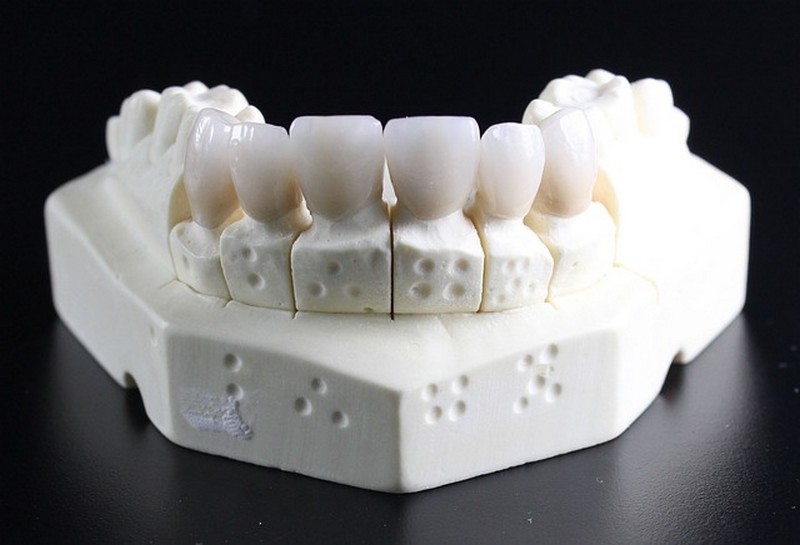By Eduardo Nicolaievsky D.D.S.
Skeletal anchorage, the concept of using the facial skeleton to control tooth movement has been reported in the literature since the early 1980’s. Various forms of skeletal anchorage, including mini-screws and mini-plates have been recommended.
It should be self-evident that good diagnosis and treatment planning are vital in providing a favorable orthodontic outcome. Anchorage management is an integral part of that process. Anchorage, the resistance to unwanted tooth movement, determines the limits of desired tooth movement possible and accordingly the amount of correction possible. Traditionally anchorage strategies for maximum tooth movement were largely dependent on patient compliance. Intraoral and extraoral auxiliaries were used in addition to grouping multiple teeth and pitting them against few. Over the last two decades, there has been increasing interest in establishing absolute anchorage with implantable devices, which respond like ankylosed teeth.
Temporary anchorage devices, (TAD), are intended to be removed at the conclusion of their active use. A TAD is a titanium-alloy mini-screw, ranging from 6 to 12 mm. in length and 1.2 to 2 mm. in diameter, that is fixed to bone temporarily to enhance orthodontic anchorage. Placement is minimally invasive anf often completed using only topical anesthesia. They can be usually inserted through the gingival tissue into bone with a srew driver. Stationary anchorage is achieved by gripping mechanically to cortical bone rather than by osseointegration. Stationary anchorage failure of TAD’s under orthodontic loading varies between 9 & 30 percent.
TAD’s should be inserted into a region with high bone density and thin keratinized tissue. The location chosen should be the optimial one in terms of anatomic limitations and biomechanical considerations. Stationary anchorage failure often occurs because the TAD is placed in a region of low bone density with inadequate cortical thickness.
Misch classified bone density into four groups, (D1,D2,D3,D4), based on the number of Hounsfield units used in computed tomography.
Proper angle of insertion is important for cortical anchorage. In the posterior maxilla and the mandible, the angle of insertion should be 30 to 45 degrees to the occlusal plane. In the anterior maxilla should approximate 90 degrees.
Entrusive forces in the molar region should be light and continuous to produce the appropriate pressure within the periodontal ligament and minimize the risk of root resorption. The recommended force for miniscrew-supported maxillary molar intrusion is 100 to 200 g. Group intrusion of the second premolar and the first and second molar requires greater force of approximately 200 to 400 grams per side.
To prevent the intruding molar crown from tipping buccaly, the orthodontist can place a transpalatal arch with buccal root activation, or place an additional TAD in the palatal position.
The rate of single molar intrusion is approximately 0.75 mm. per month. The case of group intrusion of the second premolar, first and second molars is approximately 0.5 mm. per month.
The mini-screws have the advantage of being minimally invasive and can be used in a wide variety of locations, but have the disadvantage of having a higher failure rate than the modified bone plates or palatal devices. Modified bone plates require an incision and suture closure for both placement and removal. The expense of the materials is roughly 2-3 times that for a mini-screw.
True molar intrusion can be achieved successfully with orthodontic TAD’s, re-establishing a functional posterior occlusion and reducing the need for orthognathic and prosthodontic treatment in selected cases.
About the Author
Eduardo Nicolaievsky D.D.S.
Dr. Nicolaievsky is an experienced oral surgeon who is a well-known and respected Oral and Maxillofacial Surgeon Implantologist in Mexico City for over 15 years. He attended the Universidad Tecnológica de México, where he earned his dental degree. He came to the United States, University of Miami/Jackson Memorial Medical Center, for his residencies and completed programs in both Dental Anesthesiology and Oral & Maxillofacial Surgery.
Dr. Nicolaievsky was an Associate Professor at the Universidad Tecnológica de México for many years. He is continually seeking ways to learn and grow in his oral surgery and dental implant services as technology continues to provide new and exciting ways to improve care.
Dr. Nicolaievsky is a Fellow of the American Association of Oral & Maxillofacial Surgery and a Diplomate of the American Board of Oral & Maxillofacial Surgery. Dr. Nicolaievsky decided to move to the United States and we are pleased to have such a skilled surgeon in our practice. He enjoys golfing, soccer, biking, and spending time with his wife and three daughters.
References
1. Kravitz, N.D., et al, “THE USE OF TEMPORARY ANCHORAGE DEVICES FOR MOLAR INTRUSION”, J.A.D.A., Vol.138:56-64, 2007
2. Yanosky, M.R., Holmes, J.D.,, “MINI-IMPLANT TEMPORARY ANCHORAGE DEVICES:ORTHODONTIC APPLICATIONS”, Compend. Cont. Educ. Dent, Vol. 29:12, 2008
3. Thomas, P.M., “TEMPORARY ANCHORAGE DEVICES: INDICATIONS AND APPLICATIONS”, J. Oral Maxillofac. Surg., Vol. 65:9 Supplement, 78, 2007
4. Yao CC, et al, Angle Orthod. Vol. 74:550, 2004




